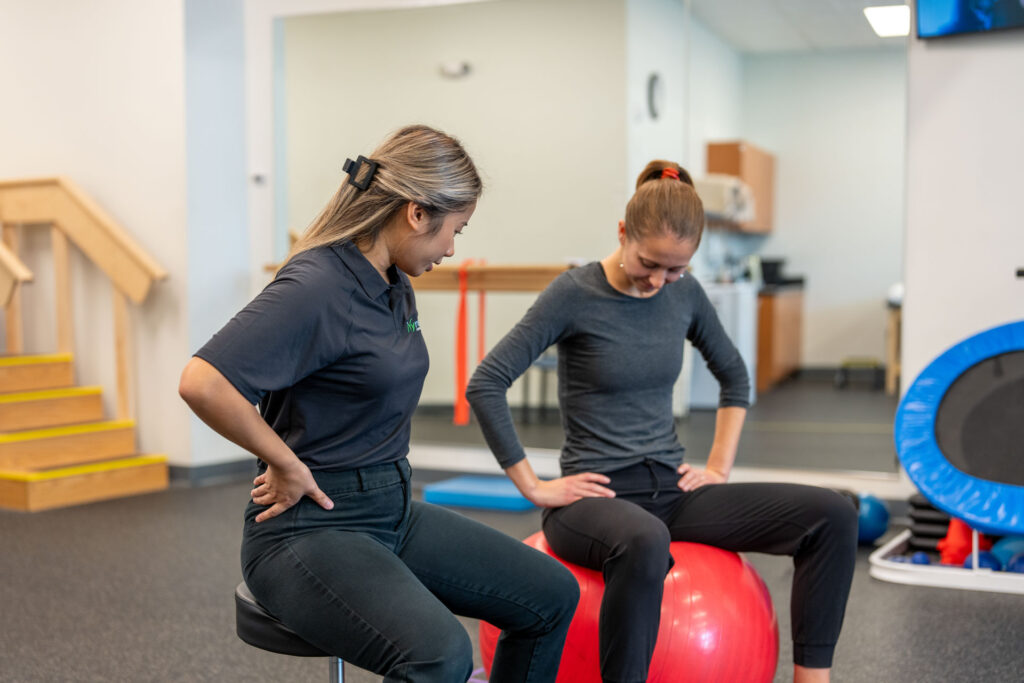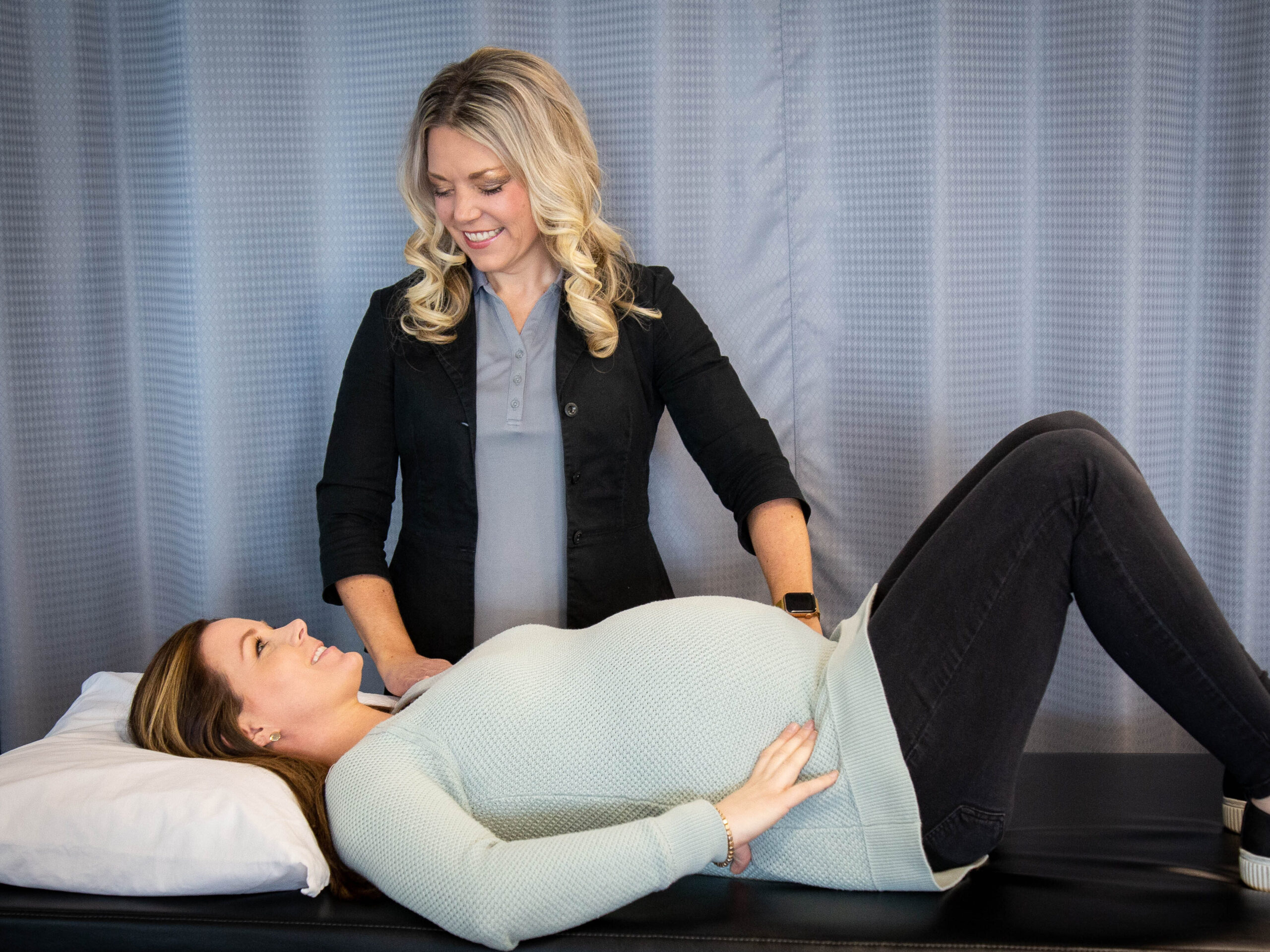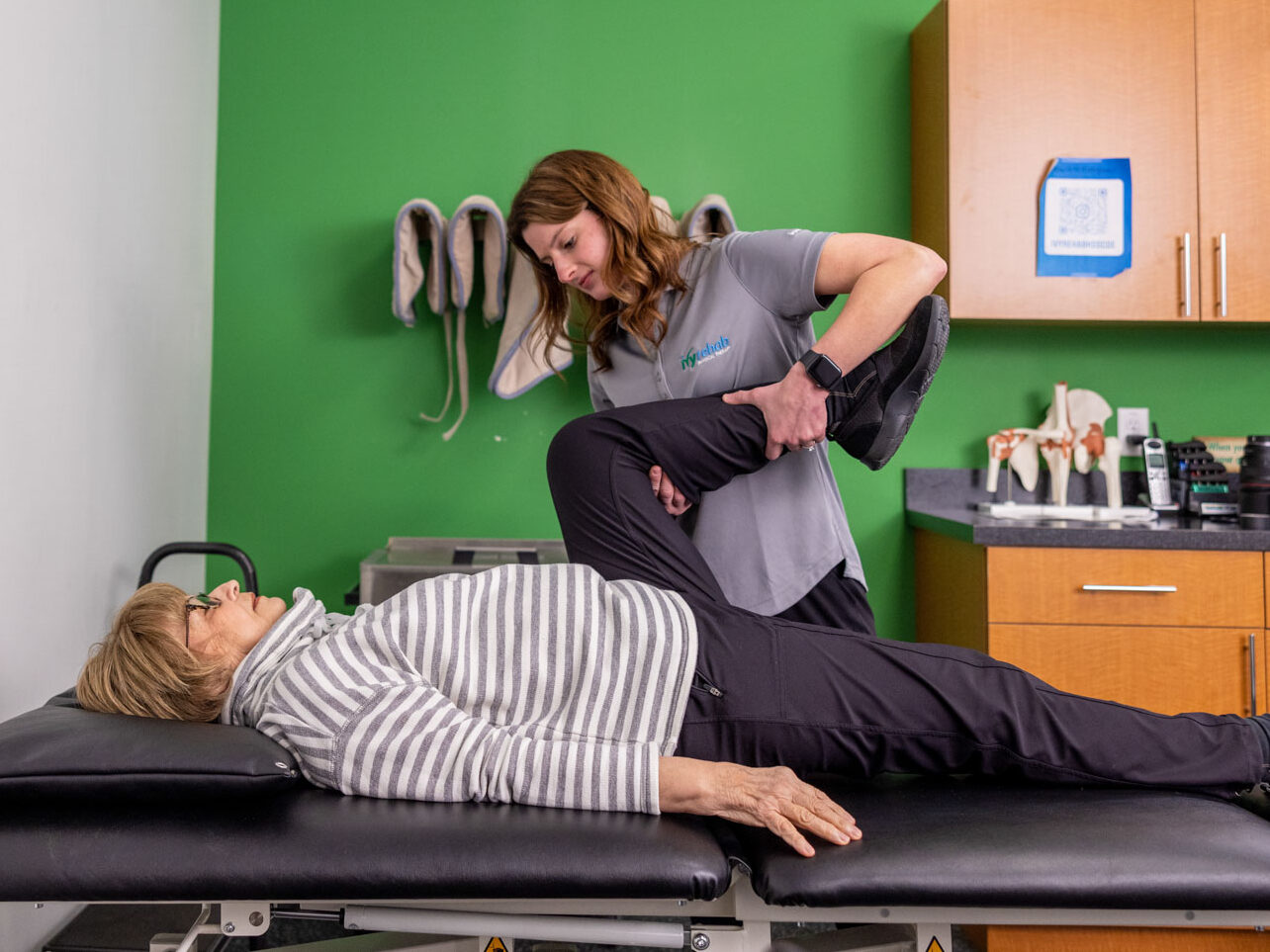
Bladder Health & Incontinence Therapy
At Ivy Rehab, our approach to bladder health and urinary incontinence therapy begins with a comprehensive evaluation to understand your unique symptoms and underlying causes. Based on these results, we develop a personalized treatment plan tailored to strengthen your pelvic floor muscles and improve their function.
What is the pelvic floor?
The pelvic floor is a series of muscles that support your bladder, uterus, bowels, as well as your bony structures such as your spine. Issues in this area can result in leakage, ‘having to go’ all the time, constipation, painful intercourse, and pain in the low back, hips, and tailbone. While these symptoms are common, they shouldn’t be labeled as normal. These issues are often long-lasting, and people feel awkward talking to their physician or health care provider but waiting will only make the issues worse. Unfortunately, when not treated by a proper pelvic health specialist, these issues are often misdiagnosed, or the symptoms are treated but the cause is missed. Our team of specialists uses education, electrical stimulation, home units, and biofeedback as needed to improve incontinence issues for both men and women.


What is incontinence?
Urinary incontinence is the leakage of urine at inappropriate times. With incontinence, you may have trouble starting the urine stream or holding urine when you feel a strong urge to go. This condition involves the muscles of the pelvic floor, which attach to the bottom of the pelvic bones and run front to back, forming a bowl-like structure that lifts to support the internal organs and controls the sphincter muscles. The pelvic-floor muscles also help support the low back, stabilize the pelvic bones, and help with sexual function. Women are more likely than men to have urinary incontinence, but men can have it, too.
Types of incontinence
- Stress incontinence – small amounts of urine leak when there is increased pressure on the bladder
- Urge incontinence – your bladder muscle goes into spasm, and, if the spasm is severe enough, medium to large amounts of urine may leak; this might happen only occasionally or as often as every 15 to 20 minutes
- Mixed incontinence – you have both stress and urge incontinence
- Functional incontinence – urine leaks when you can’t get to the bathroom in time
Stress incontinence
Stress urinary incontinence usually results from weakness and lack of support in the pelvic floor muscles. It can happen with laughing, sneezing, or coughing or with exercise or activities such as lifting. This happens due to weakness or lack of support in the pelvic floor muscles, which are responsible for maintaining bladder control. Women with stress incontinence often have “underactive” pelvic floor muscles as a result of:
- pregnancy and childbirth which can put stress or pressure on the bladder and possibly cause trauma to the pelvic floor muscles, injury or trauma
- surgery in the vagina or rectum
- episiotomy
- lack of exercise and lack of use
- after delivery women also can have fecal incontinence (leakage of stool) if there was tearing of the vaginal opening that extends to the anal sphincter
Urge incontinence
Urge incontinence happens when the bladder muscle suddenly contracts or spasms, causing an urgent need to urinate that can result in medium to large amounts of urine leakage. This can occur occasionally or frequently, sometimes every 15 to 20 minutes. Pelvic floor muscle weakness, tension, or spasms may contribute to symptoms.
Mixed incontinence
Mixed incontinence is a combination of both stress and urge incontinence. Individuals experience symptoms of urine leakage related to increased bladder pressure as well as sudden, strong urges to urinate. Because mixed incontinence involves multiple causes, it often requires a comprehensive pelvic floor physical therapy approach that addresses both muscle weakness and bladder spasms.
Functional incontinence
In functional incontinence, the cause isn’t related directly to the bladder or pelvic-floor muscles:
- Joint pain or muscle weakness that limits mobility and delays getting to the bathroom
- Confusion, dementia, or delirium
- Environmental barriers, such as the bathroom being too far away, the use of a walker that slows you down, or too many obstacles that you have to walk around to get to the bathroom
- Psychological problems such as depression or anger that interfere with timely bathroom use
- You can also have an “overactive bladder” where your bladder empties frequently throughout the day (more than every 3 or 4 hours during the day) or makes you get up more than once to urinate at night. There is a variety of causes, such as sensitivities to certain foods or beverages.

How can a physical therapist help with urinary incontinence?
Based on our evaluation results, we will individualize treatments to strengthen your pelvic floor muscles and improve their function. We can help you:
- Regain confidence and control over your symptoms
- Reduce the need for pads and special undergarments, incontinence medications, and possibly surgery
- Strengthen your muscles and make them work better for you
- Urge Incontinence
Your physical therapist will:
- Show you how to “find” the right muscles and use them correctly.
- Guide you through pelvic floor muscle training exercises, such as Kegels, where you gently squeeze the sphincter muscles along with the buttocks, thighs, and abdominal muscles.
- Instruct you in exercises to stretch and strengthen other important muscles, so that they can support proper bladder function and pelvic stability.
- Use biofeedback techniques to monitor muscle activity and improve your awareness and control. This may involve vaginal or rectal electrodes displaying muscle activity on a monitor
- Apply electrical stimulation when appropriate to increase muscle awareness and strength
Behavioral and Lifestyle Education
We provide guidance on behavioral changes and lifestyle factors that can improve symptoms, including:
- Dietary and fluid management (avoiding bladder irritants like caffeine and alcohol)
- Bladder training and timed voiding strategies
- Posture and breathing techniques that support pelvic floor function
- Strategies to prevent constipation and reduce pressure on the bladder
Remember: knowledge is power
We can provide information regarding your diet and nutrition, including food and drinks that may irritate the bladder, changing behaviors that make symptoms worse, and ways to decrease urinary urge and frequency. We have a number of physical therapists who are trained extensively in treating pelvic floor.
Request an appointment to find out how we can begin helping you today.

Find the right therapy today.
Discover how Ivy Rehab can help you achieve your therapy goals.
FAQs
Can I get rid of urinary incontinence?
Many people can significantly reduce or even eliminate urinary incontinence with proper treatment, especially when addressed early. Physical therapy for bladder incontinence has a strong track record of improving symptoms by strengthening muscles and improving bladder function. While some underlying causes may require medical or surgical interventions, physical therapy combined with behavioral changes and lifestyle modifications can greatly enhance your quality of life and reduce dependence on pads or medications.
Can physical therapy help urinary incontinence?
Yes, physical therapy is an effective treatment for many types of urinary incontinence. A trained physical therapist specializing in pelvic floor physical therapy can design a personalized program to strengthen and retrain your pelvic floor muscles, improving bladder control and reducing leakage. Therapies often include pelvic floor muscle training (such as Kegels), biofeedback, electrical stimulation, and behavioral strategies. This approach can help you regain control over symptoms without relying solely on medications or surgery.
What is the best exercise for bladder leakage?
The best exercise for bladder leakage is pelvic floor muscle training, commonly known as Kegel exercises. These exercises involve repeatedly contracting and relaxing the pelvic floor muscles that support the bladder and urethra. When done correctly and consistently, Kegels improve muscle strength and endurance, helping to prevent urine leakage during activities that increase bladder pressure.

